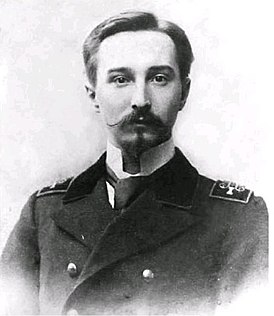 Aleksey Zazersky
Aleksey ZazerskyA graduate of the Institute of Civil Engineers (now SPbGASU) Aleksey Ivanovich Zazersky (1876–1942) became one of the prominent architects and urban planners of the Russian Empire and the Soviet Union at the beginning of the 20th century. According to experts, the architectural world of that time was complex and contradictory, but it was then that Zazersky made a significant contribution to the development of St Petersburg - Leningrad. He wrote his name in the chronicle of his native city as an architect, artist, engineer, teacher, citizen and patriot who defended Leningrad as part of the people's militia and died in the siege 1942.
In 1902, Aleksey Zazersky graduated from the Institute of Civil Engineers with a silver medal in construction art. At the beginning of his professional career, the young specialist began designing and building housing of a new type. The innovative idea of the architect-urban planner was the construction of cooperative residential complexes at the expense of future residents, which contributed to solving the urgent problem of providing housing. Among the buildings constructed in this way are residential buildings on the embankment of the Karpovka River, 19, Professor Popov Street, 28, Bolshaya Posadskaya street, 1, and Malaya Posadskaya street, 10, the residential complex of the Basseyny Association of Own Apartments (Nekrasova Street, 58–60).
The role of Aleksey Zazersky in the construction of city tram service facilities was great. He was the author of the building of the Central Electric Station on Atamanskaya Street, 3, and other transformer substations located in different parts of the city.
The architect also participated in the architectural design of the Panteleimonovsky and Anichkov bridges across the Fontanka river and the Alarchina bridge across the Catherine Canal (now the Griboyedov Canal).
In 1917, Aleksey Zazersky worked on the commission for the redevelopment of Petrograd. After the revolution, he led the reconstruction of Yaroslavl for three years. Returning to Petrograd, he taught and held responsible positions in construction organizations. According to his project (co-authored with N.F. Rybin) in 1925–1928, one of the best residential complexes was built for the workers of Nevskaya Zastava - the Palevsky residential complex on Elizarova Avenue, 8.
The architect built a textile factory and a residential building in Moscow on Arbat. As deputy chairman of the Society of Urban Architects, he designed industrial zones for Leningrad, Baku, Ural cities, and a chemical plant in Vladimir.
The Great Patriotic War found him in his native Leningrad. Despite his age, together with his son, also an architect Nikolai Zazersky, Aleksey Ivanovich joined the people's militia. He died in 1942 in a besieged city and was buried in a mass grave.
Nikolai Alekseevich Zazersky (1907–1980), who graduated from LISI (SPbGASU) in 1937, went through the entire war, after which he returned to architectural work. He participated in mass housing development of Sosnovaya Polyana, Peterhof, Okhta, Bolshoy Sampsonievsky Prospekt.
Other materials of the "Scientific Regiment" project:
Our Graduate Built the Road of Life
Front Line of the Architect Aleksandr Nikolsky
Researcher who Developed Science in Besieged Leningrad
Fights of Student Klinov
Engineer of the 3rd Belorussian Front
Nineteen-Year-Old Gunner Stormed Berlin
Path of a Volunteer: from Front-Line Roads to Space Development
Ivan Solomakhin: "The Most Memorable Battle was for this Devil's Hill!"
Fiery Dnieper of the Hero of the Soviet Union Aleksandr Prygunov
Approaching to the Victory
Fedor Komal's Front: from the War Start to the Victory
Junior Political Instructor Boris Gubanov: “Shells Were Whizzing, and the Ground Took off Nearby”
Viktor Kvyatkovsky, Radio Reconnaissance Operator of the Baltic Fleet
How the Chief Architect Nikolai Baranov Kept Leningrad "Hidden" from the Enemy
Architect Nikolai Khomutetsky: Four Years at the Forefront
Semyon Shifrin Thwarted Nazi Plans to Leave Leningrad Waterless
LISI in the Post-War Years
LISI Graduate Mikhail Zherbin, Design Engineer and Composer
Abdulla Mangushev: Four Years at the Front and the Whole Life in Science